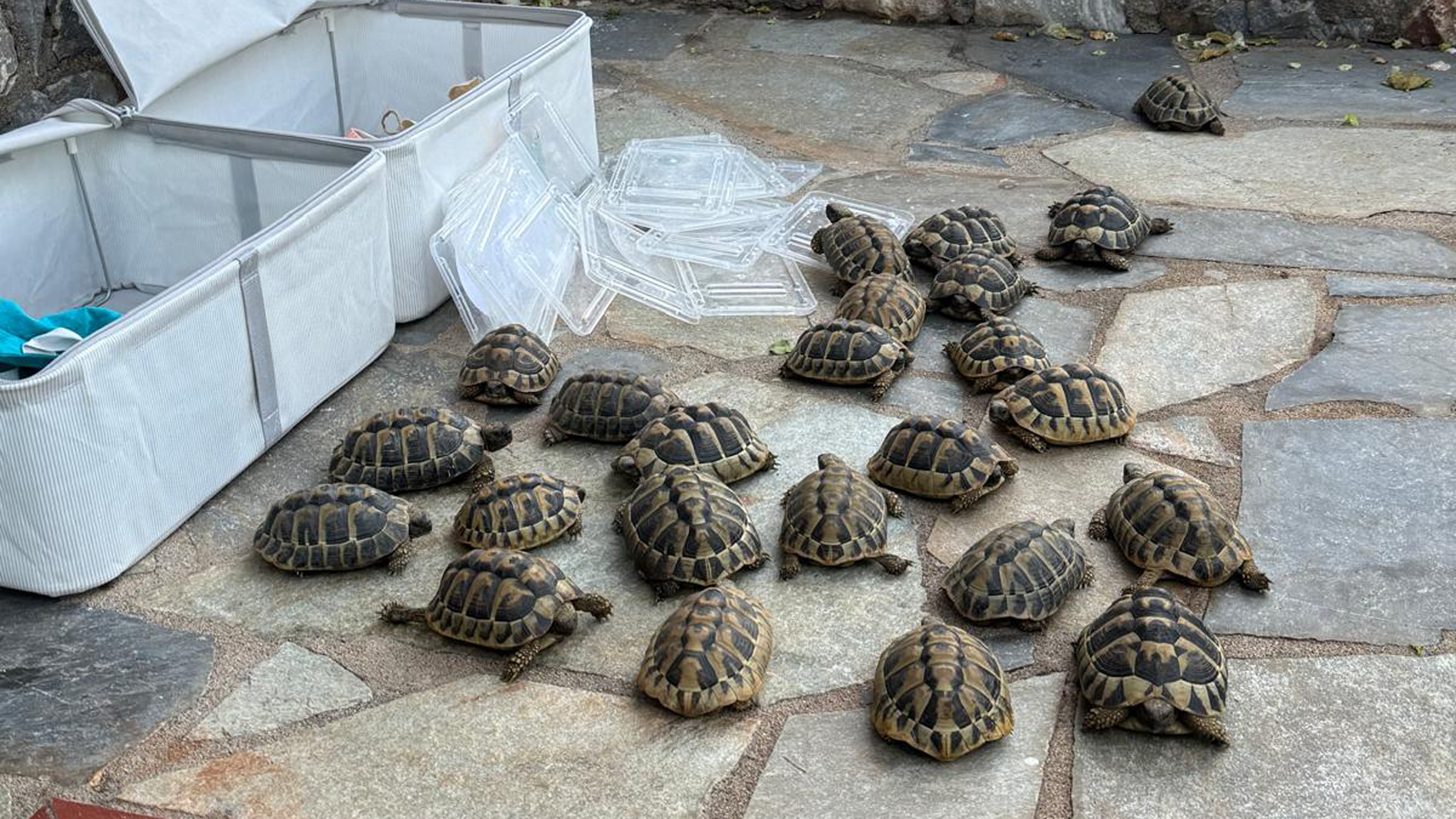THE COUNTRY
Greece
ABOUT THE ANIMAL
Common Name: Eastern Hermann’s Tortoise
Scientific Name: Testudo hermanni boettgeri
APPEARANCE AND CONSERVATION STATUS OF THE EASTERN HERMANN’S TORTOISE
The Eastern Hermann’s Tortoise (Testudo hermanni boettgeri) is one of Europe’s most recognizable tortoises. Due to its small size and hardy nature, this species has become a popular pet, most measure between 14–19 cm (5.5–7.5 in), though larger individuals exist. However, while common in captivity, wild populations are under pressure. The IUCN Red List classifies the species as Vulnerable, with particularly sharp declines in certain regions of its range.
These tortoises show moderate sexual dimorphism, with females averaging 12% larger than males. A unique feature distinguishing them from many other tortoises is the claw-like scale at the tip of the tail, especially prominent in males. Females typically lay 1–2 clutches of eggs per year (sometimes up to 3), with clutch sizes averaging 3–4 eggs but occasionally reaching 9.
WHY THE EASTERN HERMANN’S TORTOISE IS AT RISK
The species faces multiple pressures, including:
- Habitat loss and destruction from forest fires, agriculture, infrastructure, and expanding settlements.
- Collection for the pet trade.
- Increased predation, particularly by wild boar and other mammals.
WHERE ARE EASTERN HERMANN’S TORTOISES FOUND NATURALLY?
Eastern Hermann’s Tortoises inhabit Mediterranean landscapes filled with sun-drenched, stony hillsides with low, sparse vegetation and grass. While most populations live below 500 m elevation, some eastern groups are found as high as 1,300 m.
HOW TURTLE ISLAND HELPS EASTERN HERMANN’S TORTOISES
The story of this population is closely tied to the work of the late French herpetologist Roger Bour, who spent over 30 years studying tortoises in the Peloponnese. While he recorded more than 2,000 Pygmy Marginated Tortoises (Testudo weissingeri), he found only about 150 Hermann’s Tortoises—an alarming indicator of decline.
Hermann’s Tortoises from this region have a distinct appearance that sets them apart from other populations. The males are smaller than average and often have a very dark, sometimes entirely black, plastron. This particular population is exceptionally rare and important to preserve.
In 1974, the well-known herpetologist Michael Reiman collected a breeding group of Hermann’s Tortoises from the Peloponnese region. Over the decades, he cared for more than 1,600 tortoises across Germany and Turkey. When he asked Turtle Island to help relocate them, we assisted with the massive transport effort. In gratitude, Michael entrusted us with a group of these Peloponnese tortoises.
Knowing from Roger’s research how fragile this population had become, Turtle Island began developing a rewilding plan.
TURTLE ISLAND’S MISSION TO BRING THE EASTERN HERMANN’S TORTOISE HOME
Since their arrival in 2017, this group has thrived at Turtle Island. The tortoises have laid many eggs, producing a new generation of hatchlings and juveniles. One of our dedicated volunteers, Ani, has contributed in a remarkable way—building a special enclosure on her apartment balcony to safely raise juveniles from this lineage. By keeping them separate from the main Turtle Island group, she ensures these young tortoises stay healthy and protected from possible disease transmission.
Today, dozens of young tortoises descended from this population are growing under our care. These individuals are the foundation of our reintroduction effort.
RETURNING TO THE WILD AND HONORING A LEGACY
We secured all of the necessary permits to return these tortoises to their ancestral home in the Peloponnese and carried out the release in October 2025. In total, 27 young tortoises, 17 females and 10 males, were released back into their native habitat.
The event also served as a tribute to Roger Bour, whose decades of research helped bring global attention to the plight of these tortoises. His widow, Marie Noëlle, joined us in Greece for the release, honoring Roger’s legacy by returning the animals he dedicated his life to studying.
BUILDING A STRONGER FUTURE FOR THE EASTERN HERMANN’S TORTOISE
Other keepers across Europe have begun expressing interest in contributing their own offspring to the project. With their support, we hope to expand future rewilding efforts and secure a brighter future for the Eastern Hermann’s Tortoise in Greece.
This project is just one part of Turtle Island’s mission to protect endangered turtles and tortoises worldwide. You can stay connected with our work, whether it’s following the reintroduction of Hermann’s Tortoises or learning about our other ongoing turtle conservation projects by subscribing to our Newsletter.
Together, we can return these tortoises to their rightful home and ensure their survival for generations to come.


